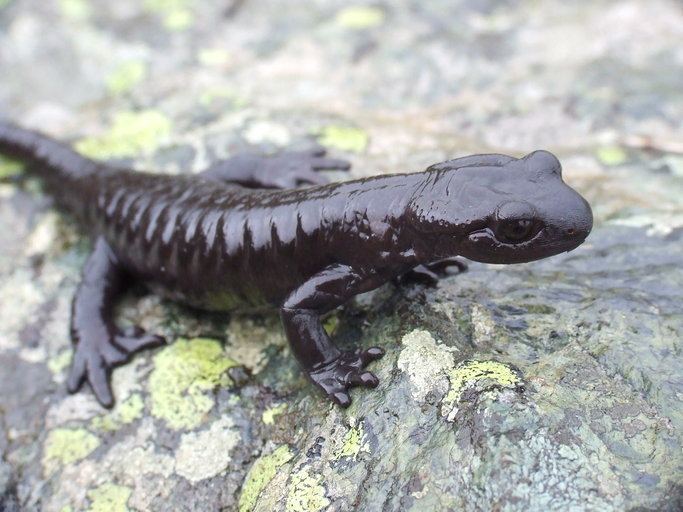Order Caudata Higher classification Salamandra | Phylum Chordata Scientific name Salamandra lanzai Rank Species | |
 | ||
Similar Salamander, Amphibians, Salamandra, Alpine salamander, Corsican fire salamander | ||
Lanza's alpine salamander or the large alpine salamander (Salamandra lanzai) is a species of salamander in the Salamandridae family, found in France and Italy. Its natural habitats are forests, grasslands, and pasturelands, all of which are temperate. It is threatened by habitat loss.
Contents
History
It was described by Nascetti, Andreone, Capula and Bullini in 1988. The generic name is from Greek which translates as "salamander", and the specific name is for Lanza, an Italian herpetologist.
Description
The species has a flat head and measures between 115 and 160 millimetres (4.5 and 6.3 in) in length. Its tail’s tip is either rounded or pointed, with or without paravertebral glands. Due to its black colour, it is similar to the other alpine salamander, Salamandra atra atra.
Distribution
The species can be found in the Cottian Alps near Monviso, and in Guil Valley of southeastern France. It can also be found in northwestern Italy, the Germanasca, Pellice Valleys, and the Po River. It is doubtful in Chisone Valley. An old sample of the species in Museo La Specola in Florence suggests it is also found in the Maritime Alps.
Ecology
They feed on various insects, spiders, and various species of slugs.
Habitat
They are found at elevations of 1,200–2,600 m (3,900–8,500 ft), with the maximum altitude of 2,800 m (9,200 ft). In France, the species can be found at 1,800–2,300 metres (5,900–7,500 ft), while in Italy it is found at 1,450–2,100 metres (4,760–6,890 ft) in altitude. A subalpine prairie is considered to be home for them. It also lives in fresh humid woods and forests and on the edges of mountainous streams.
Mating and reproduction
They start mating on land, from May to October. During that time, they becomes nocturnal, but during heavy rains, they may become diurnal. Mating happens on land mostly in May, but it depends on the climate of any given year. They give birth from two to six young, which are born completely formed, after their mating act is successfully fulfilled, which is as long as three to four years.
Toxicology
They are toxic species. When under threat, they release a liquid toxin through the small openings on their bodies. The liquid is strong and may cause irritation if in contact with the eyes. They warn predators by raising their bodies and dipping their heads downwards when threatened.
Predators
Various birds and vipers are a threat to Lanza's alpine salamander.
